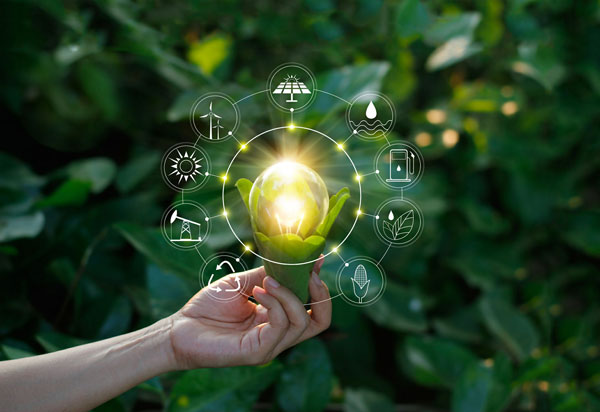Danish firms providing expertise in use, production of electricity
Zubair Qureshi
Copenhagen (Denmark)
Denmark government in partnership with the private sector has found out workable innovative solutions to reduce country’s reliance on traditional sources of energy and instead investing in bio, wind, solar energy alternatives for a green and sustainable future.
Pakistani print and electronic media journalists attended a briefing at the House of Green by Finn Mortensen Executive Director of the State of Green, a conglomerate of public and private sector organizations providing ‘green solutions’ to various challenges in energy and water sectors.
Head of ‘P4G’ (working for water security) Iver Hoj Nielsen and media focal person of the State of Green, Anette Korschen Braender were also present on the occasion and replied to various queries of the Pakistani journalists. The Pakistani media delegation is currently visiting Denmark on the invitation of Denmark Embassy as part of its project “Media Inspiration of a Welfare State.”
Denmark, said Finn Mortensen learned to adopt a course of a green nation in early 1970s and ‘Denmark learned it a hard way.’ In 1973, Organization of Petroleum Exporting Countries (OPEC) decided to raise petrol prices that served as a wake-up call for the country and forced it to look for alternate sources and means of energy, said Finn Mortensen.
Since the country in principle has decided not to go for nuclear power, it went for cleaner and sustainable sources like wind, solar, bio etc. Initially, some harsh measures were taken for instance use of cars was discouraged, instead, bicycling was promoted; households were given incentives to cut down energy consumption. Danish nation supported its government in these environment-friendly measures and today, after almost 48 years, the country is known as a green nation for it has based its energy consumption on energy generated by renewables, digitalizing its energy system, rolling out sensors and smart metres using data to create more intelligent and flexible energy systems.
Denmark uses its 95 percent waste in recycling while only 5pc ends up in landfill, Finn said. More than 90pc of households in Copehagen are connected to recycled energy, he informed the media delegation.
In June and July last, Danish wind turbines produced twice as much electricity as all Danish solar cells and power plants combined, he shared with the media persons.
Quoting media reports, Finn said some two thirds of the Danish-produced power came from wind turbines during the months of June and July.
Wind energy has become the backbone of the Danish electricity mix, and we see this clearly in the summer although the summer months are usually less windy,” said he quoting Søren Klinge, Head of Markets at Wind Denmark.
“This year, the Danish wind turbines produced around 25 per cent more electricity during June and July compared to the same months in 2018, which was a poor “wind year,” he further said. Owing to its out-of-box solutions, in 1997 Denmark became self-sufficient country and today, it is exporting electricity to neighbouring countries Sweden and Norway.
Overall, 40pc of Danish electricity now comes from renewable and the Danish government has decided that by 2050 the country would be free of fossil fuel use. While responding to a question, Finn said in next four years (by 2023) coal energy will also be phased out.
On water quality and management, he said in Denmark, strict measures are taken to maintain water quality. Here, it is safe to drink groundwater as use of pesticides is banned and water level as well as quality and maintenance of water line is regularly monitored.
Iver Hoj Nielsen while sharing Vietnam model where P4G is engaged in a number of projects and giving solutions to water issues, said Vietnam was getting maximum benefit of the Danish experience and now issues like faulty water supply, poor quality and leakages are effectively controlled.










